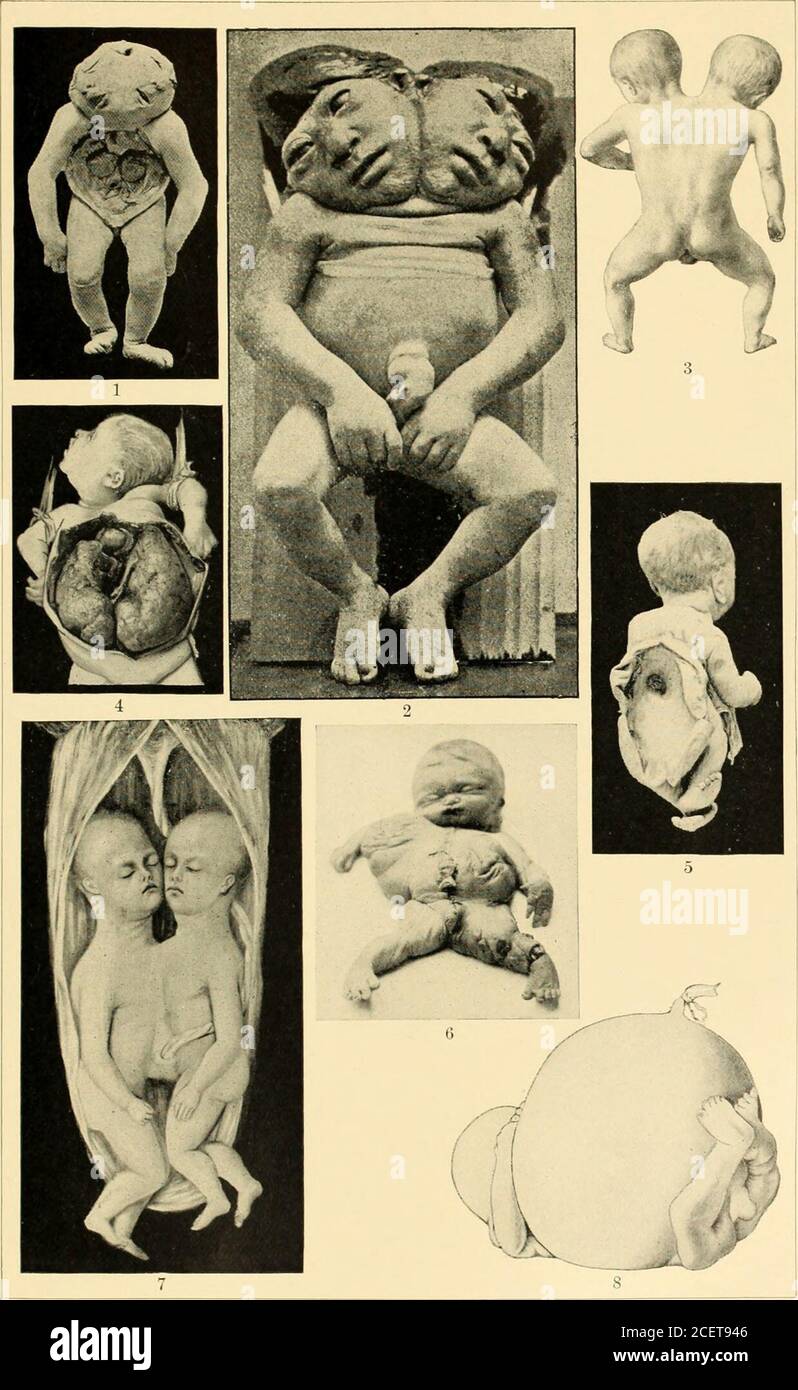. An American text-book of obstetrics. For practitioners and students. Fig. 366.—Dipygus (Wells). Fig. 367.—Dipygus parasiticus. diameter of 9 centimeters. The increase in size of successive children mustbe borne in mind in cases of contracted pelvis. The first two or three infants DYSTOCIA. Plat*: 37.. 1. Diprosopus (Hirst and Piersol). 2. Diprosopus (Fleming). 3. Dicephalus. 4. Large cystic kidneys(Fussell). 5. Largo meningocele and spina bifida i Hirst and Piersol). 6. Congenital cystic elephantiasis(Wilson). 7. Thoracopagus (Hirst and Piersol). 8. Distended bladder (Ahlfeld). DYSTOCIA. 563

Image details
Contributor:
Reading Room 2020 / Alamy Stock PhotoImage ID:
2CET946File size:
7.2 MB (373.4 KB Compressed download)Releases:
Model - no | Property - noDo I need a release?Dimensions:
1239 x 2018 px | 21 x 34.2 cm | 8.3 x 13.5 inches | 150dpiMore information:
This image is a public domain image, which means either that copyright has expired in the image or the copyright holder has waived their copyright. Alamy charges you a fee for access to the high resolution copy of the image.
This image could have imperfections as it’s either historical or reportage.
. An American text-book of obstetrics. For practitioners and students. Fig. 366.—Dipygus (Wells). Fig. 367.—Dipygus parasiticus. diameter of 9 centimeters. The increase in size of successive children mustbe borne in mind in cases of contracted pelvis. The first two or three infants DYSTOCIA. Plat*: 37.. 1. Diprosopus (Hirst and Piersol). 2. Diprosopus (Fleming). 3. Dicephalus. 4. Large cystic kidneys(Fussell). 5. Largo meningocele and spina bifida i Hirst and Piersol). 6. Congenital cystic elephantiasis(Wilson). 7. Thoracopagus (Hirst and Piersol). 8. Distended bladder (Ahlfeld). DYSTOCIA. 563 may be delivered spontaneously, but the larger size of the fourth or fifth maymake natural delivery impossible.* Overgrowth of the fetus is the most difficult condition in obstetric practiceto diagnosticate with precision. A careful palpation of the head and bodyand an attempt to push the former into the pelvic inlet may give one anapproximate idea of the relative size of fetal body and pelvic canal, but as amatter of fact the large size of the fetus is usually discovered in practice only